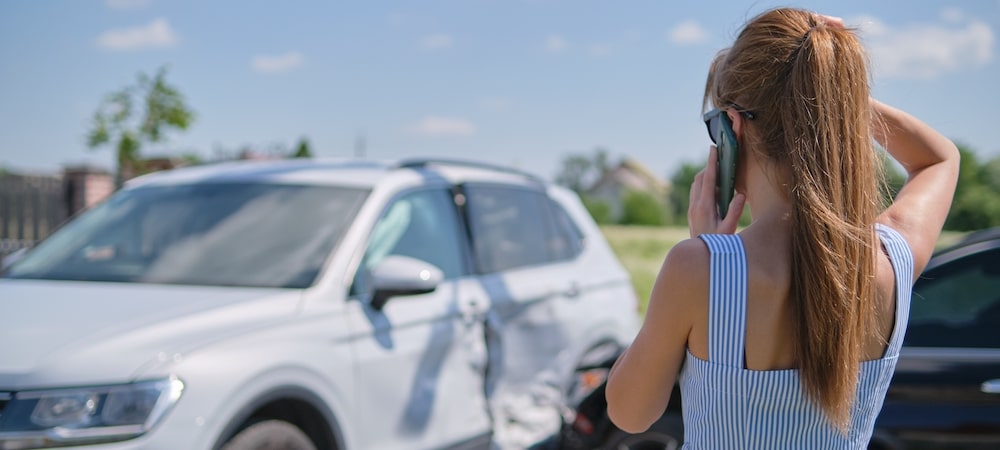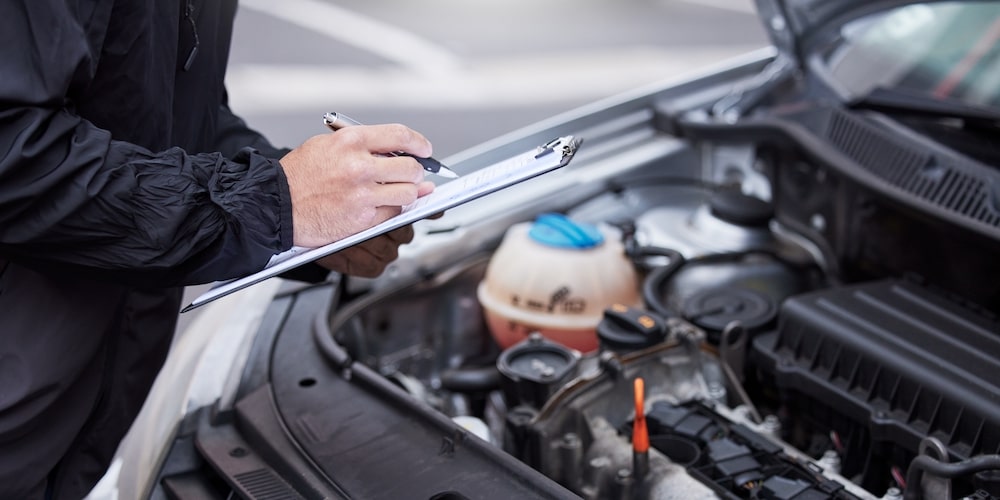After a car accident that one is not at fault for, immediate steps are critical to ensure personal safety and protect one’s rights. Car accidents can be disorienting, but safeguarding oneself from further harm by moving to a safe location is paramount. If the vehicle is operable and poses no danger, relocating to the side of the road helps prevent additional accidents. It’s vital at this point to assess for any serious injuries. If there are injured parties, contacting emergency services promptly is essential to address potential health concerns and provide needed assistance.
In the aftermath of a collision, documentation serves a key role. Individuals should gather as much information as possible from the scene. This includes exchanging contact and insurance details with the other driver involved, taking photographs of the damage to all vehicles, and noting the conditions of the road and weather. Should there be witnesses, collecting their accounts and contact information may prove helpful. This information can be necessary for insurance claims and any potential legal actions.
Navigating the post-accident process requires a calm and methodical approach, especially when another party is at fault. Contacting one’s insurance company to report the incident is a fundamental step. During this communication, it’s beneficial to relay only the facts of what occurred. The insurance company will typically guide individuals through the next steps, which may involve filing a claim, obtaining a police report, and seeking medical evaluation if injuries were sustained. Engaging with the other driver’s insurance company and understanding the extent of one’s coverage can further clarify the path towards resolution and compensation.

Safety and Immediate Steps
In the aftermath of a car accident, the primary concerns focus on ensuring personal safety and stabilizing the situation. Immediate actions are critical in preventing further harm and setting the groundwork for subsequent procedures.
Assessing Injuries
First and foremost, one should promptly evaluate whether they or any passengers have sustained injuries. If medical attention is necessary, calling emergency services is imperative. Even if the injuries appear minor, it’s wise to undergo a medical evaluation as certain car accident injuries can surface later on.
Securing the Scene
Once injuries have been assessed, moving the vehicle out of traffic to a safe location is vital to avoid any additional accidents. If the car is inoperable or leaving it could be risky, turning on hazard lights and setting up flares or reflective emergency triangles alerts other drivers to the accident scene. Ensuring safety also involves complying with local laws such as the Move Over law, designed to protect everyone involved.
Information Exchange
After safety measures are in place, it’s essential to exchange pertinent information with the other driver involved. This includes names, contact information, insurance details, and vehicle registration numbers. One should avoid discussions about fault or liability during this exchange as these statements can impact later insurance claims or legal considerations. It’s also beneficial to gather evidence, such as photographs of the damage to both vehicles, for accurate record-keeping.
Legal Considerations
When involved in an accident where one is not at fault, understanding the legal steps to take is crucial. These steps are not only vital for safety but also significant for protecting one’s legal rights in any subsequent claims or legal action.
Contacting Law Enforcement
It is essential to inform law enforcement immediately after an accident. Officers will file a police report, which serves as a critical piece of evidence documenting the incident. This report typically includes the officer’s assessment of the accident and may indicate which party they believe is at fault. The police report can be a pivotal factor when dealing with insurance companies and in the event that a personal injury claim is filed.
Gathering Evidence
One should also collect as much evidence as possible at the scene of the accident. This includes taking photographs of the vehicles, the surrounding area, any visible injuries, and obtaining the at fault driver’s contact and insurance information. Additional evidence may consist of witness statements and their contact details, which could support one’s account of the events. Documentation is key, as it provides substantive support for one’s claims and can be indispensable for legal and insurance proceedings.
Medical Attention
Securing proper medical attention after a car accident is paramount, not only for the well-being of those involved but also for accurately documenting the event and its consequences. The initial focus should be on assessing any injuries, as some may not be immediately apparent.
Immediate Medical Care
One should seek medical attention as soon as possible after a car accident, even if no injuries are immediately evident. Certain car accident injuries, like whiplash or internal trauma, might not manifest symptoms right away. When in doubt, it’s better to err on the side of caution and get checked by emergency services or visit the emergency room.
In cases of serious injuries, immediate and professional medical aid is crucial. This can include calling an ambulance or ensuring that someone does if one is unable to do so themselves.
Documentation of Injuries
Thorough documentation of any injuries sustained is essential. This includes:
- Detailed medical reports.
- Photographs of injuries.
- Notes on how the injuries affect daily life.
These records provide a clear link between the accident and the injuries, which is vital for any insurance claims or legal actions.
Keep meticulous track of all medical bills and receipts. This includes expenses for emergency services, hospital stays, ongoing treatments, and any out-of-pocket costs for medication or supportive equipment.
Communication with Insurance
When involved in a car accident that’s not your fault, effective communication with insurance providers is critical. It’s essential to promptly notify your insurance company and navigate the nuances of interacting with the at-fault party’s insurer. This will ensure the protection of your rights and streamline the claims process.
Notifying Your Insurer
Initially, the driver should inform their own insurance company about the accident, regardless of fault. This notification should ideally occur within 24 hours of the accident. The initial contact can be a brief report that includes essential details such as the time, location, and a basic description of the incident.
Key Details to Provide:
- Date and time of the accident
- Location where the accident occurred
- Contact information of the involved parties
- Policy number and details
Documentation such as photos, police reports, and witness statements should be gathered for submission to the insurer. Most insurance companies offer online claim filing or mobile apps that facilitate this process.
Dealing with the At-Fault Party’s Insurer
Interactions with the at-fault driver’s insurer should be approached with caution. The driver should never admit fault or provide a detailed statement without prior consultation with their own insurer or legal counsel. Basic facts about the accident are all that’s typically required at the initial stage.
You will want to share the fact that an accident occurred, the accident’s date and time, as well as your insurance policy information.
Obtaining a claim number and contact information for the adjuster handling the case from the at-fault party’s insurance company is important. During discussions, it’s advisable to stick to factual information without speculating or discussing injuries or damages.
Each interaction with the insurance adjusters should be noted, including the date, time, and a summary of the conversation. This meticulous record-keeping can be an invaluable reference throughout the claims process.
Filing a Claim
When one is involved in a car accident that is not their fault, they must handle the claims process with meticulous attention to ensure their car insurance claim is filed correctly. It’s imperative to gather all necessary information and submit the claim promptly to the insurance company.
Drafting the Claim
To initiate a car accident claim, the claimant should first document all the relevant details of the accident. This includes:
- The date, time, and location of the accident.
- Photographs of the scene and any damages incurred.
- Contact information and statements from any witnesses.
- The police report number, if applicable.
- A written description of the events leading up to, during, and following the accident.
You must ensure that the information is accurate and comprehensive, as it will form the basis of the insurance claim.
Claim Submission
Once the claim is drafted, submission involves several key steps:
- Contact the insurance provider as soon as possible to report the accident.
- Provide all collected information and documentation to support the claim.
- Complete any required insurance forms thoroughly and precisely.
Be sure to follow your insurance company’s guidelines for timely claim submission. Most insurers’ preferred method of submission is either online, through a mobile app, or over the phone. For those who are not at fault, it is also advisable to file a claim with the at-fault driver’s insurance company.
Throughout the process, maintaining clear and open communication with the insurer is crucial. If the insurance provider requires further information or clarification, responding promptly can help avoid delays in the processing of the insurance claim.
Legal Representation
Engaging expert legal representation after a car accident that was not your fault is crucial for ensuring your rights are protected. A qualified car accident lawyer can navigate the legal complexities and advocate on your behalf.
Hiring an Attorney
After a car accident, it’s essential to partner with a car accident lawyer from 844 See Mike. A personal injury lawyer from our law firm specializes in this legal area and understands how to manage insurance claims and litigation effectively. A Chicago car accident lawyer from our team offers services tailored to support those affected by car accidents in negotiating fair settlements.
The Role of Legal Counsel
The primary role of a legal counsel in the wake of a car accident is multifaceted. Personal injury lawyers focus on:
- Proving the client wasn’t at fault for the accident.
- Accurately estimating the total cost of injuries, including any long-term medical care.
Here at 844 See Mike, we employ our expertise to provide clear, knowledgeable guidance at every step. We work assertively to ensure the client’s needs are met through legal avenues.
Our understanding of local laws proves particularly beneficial in cases specific to the region. This is why choosing a Chicago car accident lawyer is so important.
Understanding Comparative Fault
Comparative fault is a legal concept used to allocate damages in situations where multiple parties are responsible for an accident. When an individual is involved in a car accident, and both parties contributed to the incident, the idea of comparative fault comes into play. This system determines the degree of fault for each driver, which directly impacts how damages are awarded.
In some states, like Illinois, the law follows a modified comparative fault rule. Under this rule, a party can recover damages only if they are less than 50% responsible for the accident. If a party is 50% or more at fault, they are barred from recovering any damages.
The process works as follows:
- After an accident, both parties’ actions are thoroughly investigated.
- Each driver is assigned a percentage that represents their share of fault.
- A plaintiff’s damage award is reduced by their own percentage of fault. For example: If Driver A suffers $10,000 in losses and is deemed 20% at fault, while Driver B is 80% at fault, Driver A’s recovery would be reduced by their own share of the fault, granting them $8,000.
In this system, determining the accurate levels of fault is crucial, as it significantly affects the compensation one can receive. It is advised for those involved in such accidents in Illinois to consult with an attorney who can help navigate the complexities of comparative fault to ensure a fair outcome.
Managing Financial Impacts
After a car accident that was not one’s fault, financial repercussions can be significant. These can include immediate out-of-pocket expenses and longer-term financial burdens.
Handling Immediate Expenses
One may face immediate costs such as medical bills and costs for alternative transportation. It’s crucial to keep all receipts and document any expenditures related to the accident. If insured, one should contact their insurance company as soon as possible to initiate an insurance claim, which can help cover these initial expenses.
Medical expenses:
- Keep a detailed record of all medical treatments.
- Submit any medical bills to your insurance provider for reimbursement.
Transportation costs:
- If a rental car is needed, choose one approved by your insurer.
- Save receipts from public transport or rideshare services used.
Preparing for Long-Term Costs
Long-term financial impact may include ongoing medical treatment costs or legal action’s costs. It’s vital to work closely with one’s insurance provider to understand the scope of coverage. If the damages exceed what the insurance covers, legal consultation with an attorney who specializes in auto accidents might be necessary. They can help one navigate the complexities of car insurance and secure fair compensation.
Ongoing medical treatment:
- Anticipate future medical expenses and discuss them with your insurer.
- Consider the need for physical therapy or long-term care.
Insurance and legal matters:
- Detailed documentation will support your claim.
- Stay informed about the statute of limitations for filing additional claims.
Monitoring the Insurance Claim Process
After initiating a car insurance claim, one must stay vigilant to ensure that the process is progressing effectively. Clear and timely communication with the insurance company is essential. Here’s how one can effectively monitor the claim:
Initiation: Confirm the claim is set up by receiving a claim number.
Documentation: Provide all required documents promptly to avoid delays.
Adjuster Assignment: An adjuster is typically assigned to assess the claim. Regularly checking in with this individual can provide updates on the status of the claim.
Repair Process: If applicable, discuss the repair process. This can include selecting an approved repair shop or getting an estimate.
Claim Evaluation: The insurance company will evaluate the claim based on their adjuster’s report and make a settlement offer.
Follow Up: Insurance procedures can take time. If there seem to be undue delays, do not hesitate to follow up. Document all correspondences for future reference.
Settlement: Once a settlement is agreed upon, ensure that all forms for compensation are completed and submitted.
One should always be aware of the timeline an insurance company may have for settling a claim and the policyholder’s rights during the process. If any issues arise during the claim, one may consider seeking legal advice to protect their interests. Remember, the goal is to get one’s vehicle repaired or replaced fairly and within a reasonable timeframe.
If Your Claim Is Denied
When an insurance claim is denied after a car accident that was not one’s fault, it is crucial to understand the rationale behind the denial and take appropriate steps to contest the decision if necessary.
Understanding the Denial
The first step for someone whose car accident claim has been denied is to meticulously review the denial letter from the insurance company. This document should clearly state the reasons for denying the claim. Common reasons may include a lapse in policy coverage, the incident being outside of policy terms, or insufficient evidence to support the claimant’s version of events. Obtaining a full understanding of the denial allows an individual to address specific issues when contesting the decision.
Contesting the Decision
To effectively contest a denial, one should consider the following actions:
- Gather Documentation: Compile all relevant evidence such as accident reports, witness statements, and photographs of the incident.
- Review Policy Details: Look over the insurance policy carefully to ensure that the accident and related damages are indeed covered.
- Contact an Attorney: Engage with a car accident attorney from 844SeeMike Personal Injury Lawyers who can provide legal advice and potentially represent the individual’s interests.
- Formal Appeal: Write a formal appeal letter to the insurance company, disputing their reasons for denial with supporting evidence.
- State Insurance Department: If the appeal is unsuccessful, contacting the state insurance department can be a next step, as they can offer guidance on additional options.
It’s important to act promptly and follow the insurance company’s procedures for appeals to increase the likelihood of a favorable resolution.
Considering Further Legal Action
When an individual is involved in a car accident that is not their fault, considering further legal action is an important step. This may include filing a personal injury lawsuit and understanding the litigation process to ensure compensation for damages and injuries sustained.
Filing a Personal Injury Lawsuit
If injuries are sustained in a car accident, one may consider filing a personal injury lawsuit to seek compensation. In doing so, it’s critical to gather evidence from the accident scene, including photos of the vehicles and any injuries. It is also essential to consult with a qualified car accident lawyer from 844 See Mike. We can advise you on the chances of a successful claim and guide through the legal procedures.
Contact us today to begin the process.




